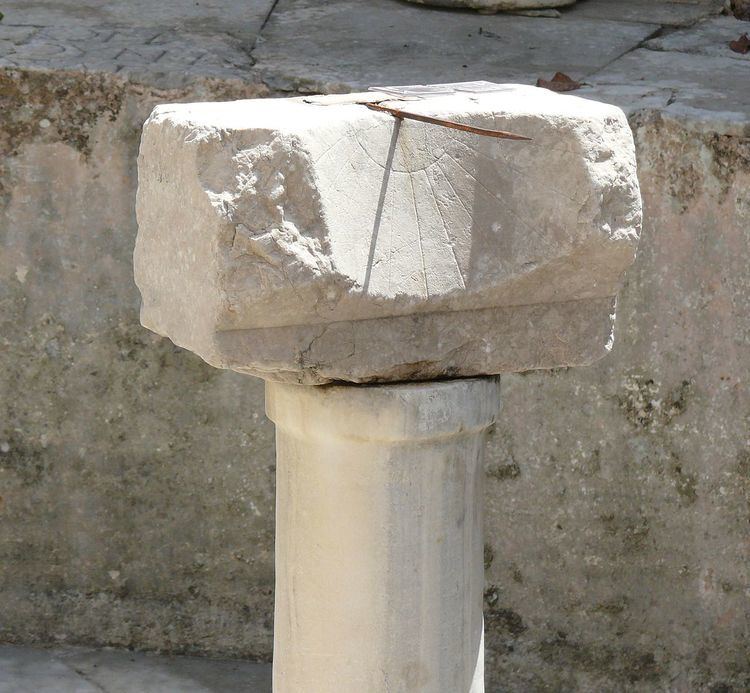 | ||
The Roman clock, or time of day, was divided into 24 hours (Latin horae), 12 hours of light and 12 hours of darkness.
Contents
Seasonal change in the length of hours in the day
Since the length of the sunlight varied with the seasons, this also meant that the length of the hour changed - with shorter hours in winter and longer hours in summer. The Romans also understood that the length of daylight depended upon latitude. At the winter solstice, at mediterranean latitude, an hour was about 45 minutes, while at the summer solstice, an hour was about 75 minutes.
Local timekeeping across the Roman Empire
Since local habits varied across the empire, local Roman habits also varied. In particular, whether the day started from sunrise, or later midnight (as Romans), or from sunset as Athenians and Jews. The Romans also divided the day into other periods, such as media noctis inclinatio "midnight," gallicinium "cock-crow", conticinium (with variants such as conticuum) "hush of the night," and diluculum, "decline of the day." The Jewish and early Christian subjects of the empire often had different methods of timekeeping.
Beginning of the Roman day
The Roman civil and religious day began at midnight from a very early time. Modern opinions of this, by ones such as Unger (1892) and Ramsay (1896) maintain that the hours of the day and the night were always counted from dusk, or dawn, hence that the "sixth hour" represented midnight or midday respectively. Yet following classic Roman thinking, Jack Finegan (1964) argues that the "sixth hour" can be counted from midnight. He maintained this position despite not having any evidence at all. As an explanation, he referenced the time in which Jesus was at Pilate (sixth hour) and the time in which he was crucified (third hour). Consequently, he argued that because of such supposed Roman time, in texts such as the New Testament it is not always clear whether local time or Roman time is meant. For example, the Gospel of John makes reference to Pilate having said "behold your king" to the people of Jerusalem at "the sixth hour". If it was accounted as Hebrew time, it was noon or midnight, but if John used the supposed Roman time, it was six o'clock in the morning, whereas Mark refers to Christ being crucified at the "third hour," darkness from "the sixth hour to the ninth hour," and Christ's last words shortly after the "ninth hour". If John wrote from Ephesus after the year AD 70, then he would not be writing from a Hebrew culture, nor presuming a purely Jewish audience, and so the more likely time reference would be according to Roman counting.
To indicate that it is a day or night hour Romans used expressions such as for example prima diei hora, prima noctis hora, hora prima noctis.
Watches of the night
The Romans divided the night into four watches, (Latin vigiliae plural), following the Greek practice (Greek φυλακή), since, as Vegetius explains, a city-guard could not stand watch all night. For example, "in the fourth watch of night" (quarta vigilia noctis) meant just before dawn.
According to many sources each watch consisted of three of the twelve listed previously night hours.
Time keeping devices
The Romans used various timekeeping devices including the clepsydra, or water clock, and the Greek sundial. Censorinus describes the introduction of sundials to Rome by Manius Valerius after his victories in Sicily. A humorous comment about the prevalence of sundials is illustrated by a character in The Boeotian Woman, a drama by Plautus, who complains "May the gods destroy that man who first discovered hours and who first set up a sundial here, who cut up my day."; though the comparison is with the speaker's young days when a child is free of timekeeping, not about the introduction of sundials. Marcus Vitruvius Pollio lists various types of sundials in Book IX of his De Architectura, with attributions to their Greek inventors.
